“Kya zaroorat hain itna zagmag se event karneka? Make In India simple se bhi to ho sakta hain” (What’s the need for all this extravagance, the Make In India event could have been arranged in simple manner), the elderly sort of man sitting right next to me in the autorickshaw blurted out. It had been a tenuous Monday morning since the auto-wallahs in Mumbai had gone on a flash strike; making the task of finding an auto no less than one of one of Hercules labor. After much consternation and time, had landed myself in a share-auto to BKC, along with two other gentleman who had squeezed in. The fact that all of us were agitated and angry was not surprising, after all when something as mundane as 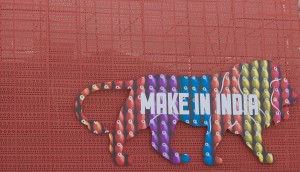 finding an auto becomes an ordeal, something as extraordinary as a Make In India Week (MIIW) seems completely unnecessary. Thus on spotting a green colour media pass for MIIW dangling from my neck, the gentleman in the hard-won share-auto could not help comment. “Auto strike to rokh naheen paya, phir itna bada nautanki kyun?” (The administration could not stall the auto strike, so what is the real need for such an event).
finding an auto becomes an ordeal, something as extraordinary as a Make In India Week (MIIW) seems completely unnecessary. Thus on spotting a green colour media pass for MIIW dangling from my neck, the gentleman in the hard-won share-auto could not help comment. “Auto strike to rokh naheen paya, phir itna bada nautanki kyun?” (The administration could not stall the auto strike, so what is the real need for such an event).
As I alighted the auto and walked past the huge crimson red pavilion with the words “Make In India Centre” emblazoned in huge golden letters, with flags of very many nations fluttering in the foreground, I was thought over the words of the man and was reminded of an anecdotal parable we often share about the way Indians function. It’s the one that has an open dish and Indian cockroaches within it. None escapes, because no sooner one tries to climb out, the rest gang up and pull him 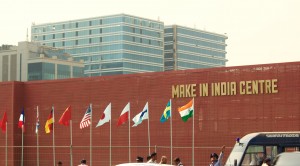 down. Somehow, that anecdote seemed apt to me. It seems that we Indians seem to have a problem with success, especially when it is of our very own. We find it hard to digest, to come to terms with it. So we lash out at it, debunk it, call it useless, futile, nautanki, etc.. That is a typical way in which many react in India. But this trend has exacerbated with the coming the PM Narendra Modi. Everything now is perceived from a political prism, thus, if you don’t agree with him, everything he does has to be negative. So what if it is Skill India or Make In India?
down. Somehow, that anecdote seemed apt to me. It seems that we Indians seem to have a problem with success, especially when it is of our very own. We find it hard to digest, to come to terms with it. So we lash out at it, debunk it, call it useless, futile, nautanki, etc.. That is a typical way in which many react in India. But this trend has exacerbated with the coming the PM Narendra Modi. Everything now is perceived from a political prism, thus, if you don’t agree with him, everything he does has to be negative. So what if it is Skill India or Make In India?
The best instance of this bias could be seen in the way the media in general covered the event. The fourth estate largely avoided talking about the event, or when they did it were the negative aspects were highlighted. So the fire at one of the Make In India event became a talking point. There were talks about mismanagement, the lack of coordination by the organisers, the absence of non-NDA states, and then was all the talk about the quantum of MOUs signed and how much would be realised. These were the things that were talked about, not the fact how many attended or what was on display.
Looking beyond the extravagance
Strangely, jamboree was the appellation that the MIIW has been dubbed by the media at large. The event that was spread over a week, and inaugurated by Prime Minister Narendra Modi himself, has either been ignored or spoken in a b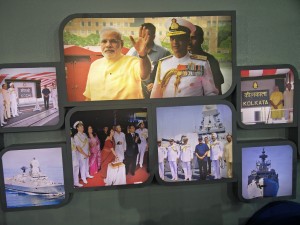 lithe manner. The term jamboree (essentially means a large congregation or party; extravagant and lavish. Usually, a boisterous affair.) is symbolic of that mindset, a perspective that has been tinged with ignorance
lithe manner. The term jamboree (essentially means a large congregation or party; extravagant and lavish. Usually, a boisterous affair.) is symbolic of that mindset, a perspective that has been tinged with ignorance
or naivety. Anyone who visited the event would vehemently argue over the term of reference. The scope and spread of MIIW cannot be expressed as jamboree; it is much beyond those trivial description that hinge largely on size and scale.
But before we come to the very core of what MIIW was, let’s do touch upon its most talked aspect; the size. Indeed, it was one of the most impressive event in terms of scale. Spread over 2,30,000 sq. mt of prime land in Bandra Kurla Complex, there were 27 air-conditioned pavilions that were erected in crimson red.
Within these pavilions, hundreds of companies set up their stalls. It is claimed that over 2,500 international and 8,000 domestic companies participated in the event. In addition there were foreign government delegations from 68 countries and business teams from 72 nations. As many as  17 states, primarily BJP-ruled ones, participated in the expo, putting up their stalls and presenting selves as investment destinations.
17 states, primarily BJP-ruled ones, participated in the expo, putting up their stalls and presenting selves as investment destinations.
There were scores and scores of seminars that were conducted, from discussing capital goods policy to how branding and design is important. On all days, there were VIPs, prime ministers and others from foreign governments, chief ministers from Indian states, holding meetings and delivering keynotes.
Culture on a platter
And while the business was being conducted at the higher echelons running into millions and billions, at the very same time throughout the event the diversity of Indian culture was on display. At all times, across the wide spread of MIIW, there were these group of artists from across India, acrobats from Punjab, tribal dancers from Madhya Pradesh, performers from Kashmir, bamboo dancers from Nagaland, musicians from Tamil Nadu, folk singers from Rajashtan, and so on, were all there performing at the complex. The atmosphere was electric. To top it all, there was a one whole pavilion that was dedicated for Indian handicrafts, where celebrated artisans like a Padamshree potter, a renowned calligrapher, or even a rangoli designer were all displaying their amazing skills and works . Not to forget, posing for selfies with the eager people thronging the space.
In addition, there was the monster truck of BEML, the BH205E on display and so were the missile system Akash. In fact, just like handicrafts, there was one full pavilion that was dedicated to defence industry. So you had the likes of ISRO, DRDO, Indian Navy and so on, present at the event, bringing in their scientists and engineers, and letting people interact with 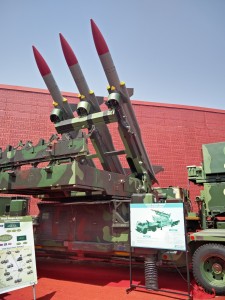 them. Imagine, when else, could you get a chance to talk and interact with the head of design at LCA, discussing the issues with Kaveri engine and the need to go in for GE404, or be able to talk to ISRO scientists about Bhuvan, the open-source web-based GIS tool. And if that is not enough, be able to quiz the people at Bharat dynamics on missile systems like Akash, Nag, and torpedoes like Varunastra. Right outside, the defence pavilion, in the open space were an amazing display by JCB, wherein the huge cranes danced to the tune of a band that had come down from Bengaluru.
them. Imagine, when else, could you get a chance to talk and interact with the head of design at LCA, discussing the issues with Kaveri engine and the need to go in for GE404, or be able to talk to ISRO scientists about Bhuvan, the open-source web-based GIS tool. And if that is not enough, be able to quiz the people at Bharat dynamics on missile systems like Akash, Nag, and torpedoes like Varunastra. Right outside, the defence pavilion, in the open space were an amazing display by JCB, wherein the huge cranes danced to the tune of a band that had come down from Bengaluru.
Throughout the place, there were buggies moving around ferrying common people and ‘protocol’ VIPs. There was even a huge food court that had almost every cuisine on offer, from pizzas to dhoklas. From Social to Moches and even Miller, one could enjoy light beers right in the middle of proceedings.
The atmosphere 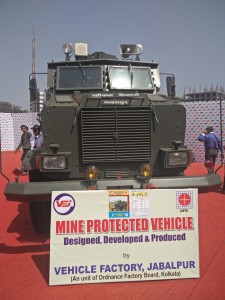 at the event was electric, and there was an esoteric mix of business, culture, entertainment and innovation. Across the pavilions the Lion of Make In India was reinterpreted in myriad ways in consonance with the different pavilions. There were scores and scores of people, at the event and on the last couple of days there was a line no less than a kilometre long of eager people wanting to enter the venue. Indeed, there were the niggles, the security hassles, the smelly toilets. But don’t forget, this was the very first
at the event was electric, and there was an esoteric mix of business, culture, entertainment and innovation. Across the pavilions the Lion of Make In India was reinterpreted in myriad ways in consonance with the different pavilions. There were scores and scores of people, at the event and on the last couple of days there was a line no less than a kilometre long of eager people wanting to enter the venue. Indeed, there were the niggles, the security hassles, the smelly toilets. But don’t forget, this was the very first
time that an event of such scale and size had been organised, and it worked to a well-set plan. For that all, much kudos is due to DIPP and the local administration for not only ensuring that the event was free of hassles, but also a great success.
Money does matter
In the end, MIIW raked up some impressive numbers in terms of moolah as well. According to Amitabh Kant, Secretary of India’s Department of Industrial Policy and Promotion (DIPP) investment commitments had reached 15.2 trillion rupees ($222 billion). While, the detractors were quick to latch on to the percentage of this amount that would actually translate into investment, the fact remains, that even if it is a quarter it will still be a huge number, and a significant nudge to India’s manufacturing aspirations.
So, what was the real purpose or need for Make In India jamboree, just like the gentleman in the auto asked? Why the nautanki at all? Well, to be fair, if at all, it was a nautanki, it is much needed right now. The MIIW was like those scale models created by architects that give you an idea how the project will evovle. In that way, the MIIW was like a 3D model of Make In India policy. It was a vision that was laid out vividly on the MMRDA grounds.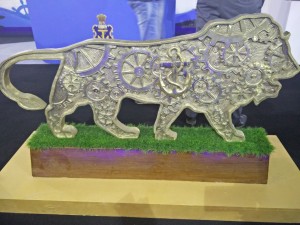 This is where the event scored, it gave a tangible credence to the concept of Make In India. I mean, before Shahjahan had built the Taj Mahal, he must have envisaged it in his mind and then built a model of it. The MIIW was a working model of Make In India concept. It was a showcase of India’s capability and aspirations at the same time. The size and scale was an indicator of what the new emerging India thought of itself, not an apologetic 3rd world country but a power-house of people and economical might.
This is where the event scored, it gave a tangible credence to the concept of Make In India. I mean, before Shahjahan had built the Taj Mahal, he must have envisaged it in his mind and then built a model of it. The MIIW was a working model of Make In India concept. It was a showcase of India’s capability and aspirations at the same time. The size and scale was an indicator of what the new emerging India thought of itself, not an apologetic 3rd world country but a power-house of people and economical might.
Hence, to that end, the event was not an option but a necessity. If at all it could be termed as a jamboree or a nautanki; such jamborees or nautankis are much necessary not only for all the phirangis that were present there, but also for all the Indians that had heard so much about the program but known so little about it. All the people who were associated with the event were so eager and enthused that it showed. For instance, while on one of my loo breaks, I happen to spot the people from BMC, with their dumper clearing the waste. I got into a conversation, asking them about how did they do their job or what they thought 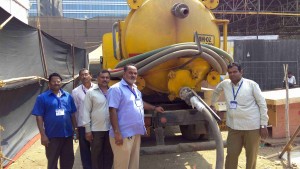 of the event. There were a total of 9 huge toilets across the exhibition place, and these people were clearing a 1000 kgs of waste, some 8-10 times a day. Yet, there was an air of pride in them in being associated with this event. “We never have seen something like this. We never could have imagined something like this,” they said while happily posing for a snap for me.
of the event. There were a total of 9 huge toilets across the exhibition place, and these people were clearing a 1000 kgs of waste, some 8-10 times a day. Yet, there was an air of pride in them in being associated with this event. “We never have seen something like this. We never could have imagined something like this,” they said while happily posing for a snap for me.
Frankly, if this event would have been organised anywhere else in the world, it would have been a thing of pride for that nation. Somehow, our real-world sensibilities are often clouded by political inanities, so much so that we are unable to discern between what is good and what is not.
A different India
Right next to the entry point at Gate No. 3, there was an unusual plane that was on display. The six-seater aircraft had been designed and fabricated by Capt. Amol Yadav single-handedly on top of his house in Charkop, Mumbai. The beauty about this plane is that it can fly on normal fuel, unlike the ATF that is necessary for commercial planes. The humble inventor was there at the event, interacting with all the people who were amazed by the incredulity of someone building a plane on their terrace. W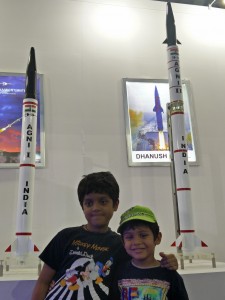 when I asked him, what was the response of people at the beginning, when he must have shared the idea of building a plane. “Are you mad was the most common expression,” he told me with a simple smile. And then he narrated the story of how he went ahead, in spite of all the objections and nay-sayers.
when I asked him, what was the response of people at the beginning, when he must have shared the idea of building a plane. “Are you mad was the most common expression,” he told me with a simple smile. And then he narrated the story of how he went ahead, in spite of all the objections and nay-sayers.
Now, if Capt. Yadav had listened to all those people and not his own heart or mind, the world would not be talking of a man that built an aircraft in his backyard (more appropriately, his terrace of a 3 BHK house). Methinks, the case with the MII lion is not much different either. MIIW might be a nautanki, a jamboree now, but years later when the benefits start coming in, it will be remembered as a visionary start. Sometimes, it is better to ignore the roaches pulling your feet, concentrate and work hard on moving forth. Appellations and terms keep changing with time. So, why waste time over it?
So was MIIW a nautanki? How big was a nautanki? Necessary or a waste? Well, let’s leave it for history to decide…
